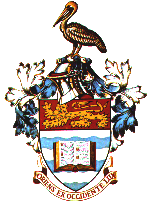![]()
![]()
![]()
![]()
![]()

![]()
![]()
![]()
![]()
![]()
A. Mutation
i. point
mutations
ii. chromosomal mutationssubstitution, addition, deletion
reversions & suppressor mutations
transitions & transversions
iii. genomic mutationsduplication, inversion, deletion, translocation, reciprocal translocation
iv. mutagens and their modes of actionpolyploidy, aneuploidy
nitrous acid, hydroxylamine, alkylating agents, heat, base analogues, acridines, ionising radiation, UV light
B. DNA
repair
photoreactivation, excision repair, mismatch repair, proofreading, O6-methylguanine methyltransferase, postreplication repair
C. Isolation, selection
and analysis of mutants
i. morphological
and auxotrophic mutants
ii. replica
plating, enrichment, toxic analogues
iii. drug resistance,
lethal mutations (BascX, Clb in Drosophila)
iv. Cy/Pm; Di/Sb stock
in Drosophila
v. complementation
& complementation analysis
PART 2
A. Gene and genome structure
ii. structure of the genecentral dogma & exceptions
definition of the gene
iii. Organisation of the genomedifferences between eukaryotic and eubacterial genes
promoters, leader, introns & exons, enhancers, trailers
iv. Centromeres & telomeres (telomerase and telomere replication)the C-value paradox
classification of genomic DNA
features of eukaryotic genomesgenes, families, & superfamilies; pseudogenes; SINEs, LINES & transposons; satellite DNA; VNTRs
detection of extrachromosomally-inherited traitsreciprocal crosses, heterokaryon formation, heteroplasmon formation, linkage analysischloroplast & mitochondrial DNA
B. Gene expression
i. Transcription and translation
ii. RNA processingRNA polymerases
iii. regulation of gene expressioncapping, splicing, tailing
splicing of various introns - groups I, II, IV and pre-mRNA
transcription factors
lac & trp operons: catabolite repression & attenuation
PART 3
A. Genetic Mapping in bacteriophages
lysis and lysogeny
mixed infections
two- and three-point crosses
B. Genetic mapping in
bacteria
i. conjugation
ii. transductionF-, F+, Hfr, F', mapping by interrupted mating, merodiploids, sexduction
iii. transformationGeneralised and specialised transduction,
co-transduction, three-factor transduction
cotransformation
C. Genetic mapping in
fungi
i. ordered tetrads
ii. parasexual analysisfirst and second division segregation
linkage in meiotic tetrads
PART 4heterokaryon formation
determination of linkage relationships
generalized recombination, the Holliday model; Meselson-Radding & Szostak variations
B. Transposons and TranspositionAdded 11/26/2000
This template created by the Web Diner.